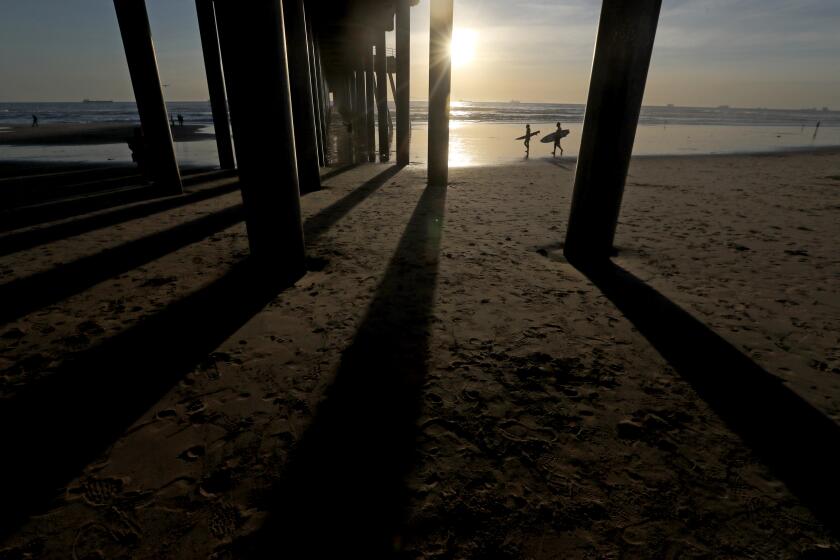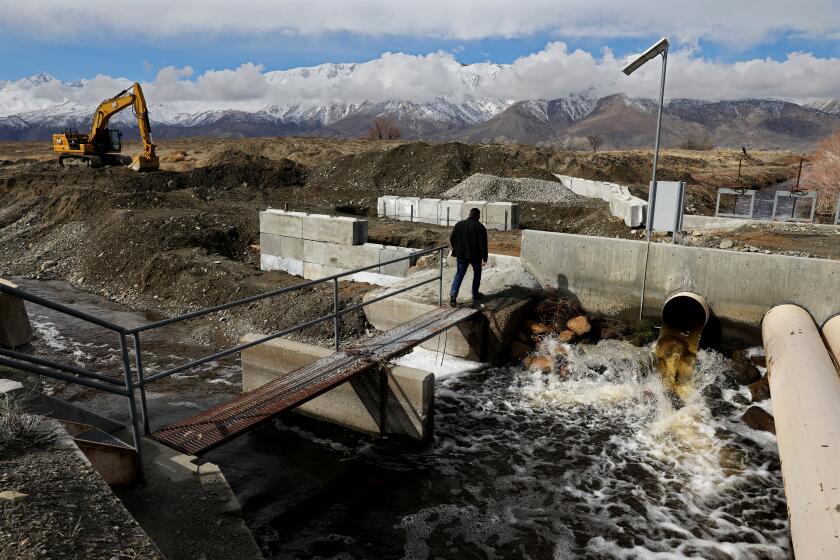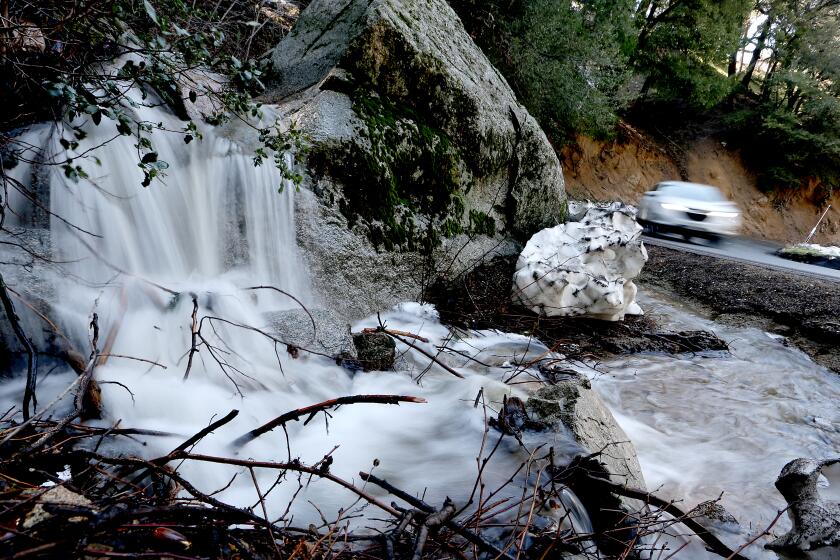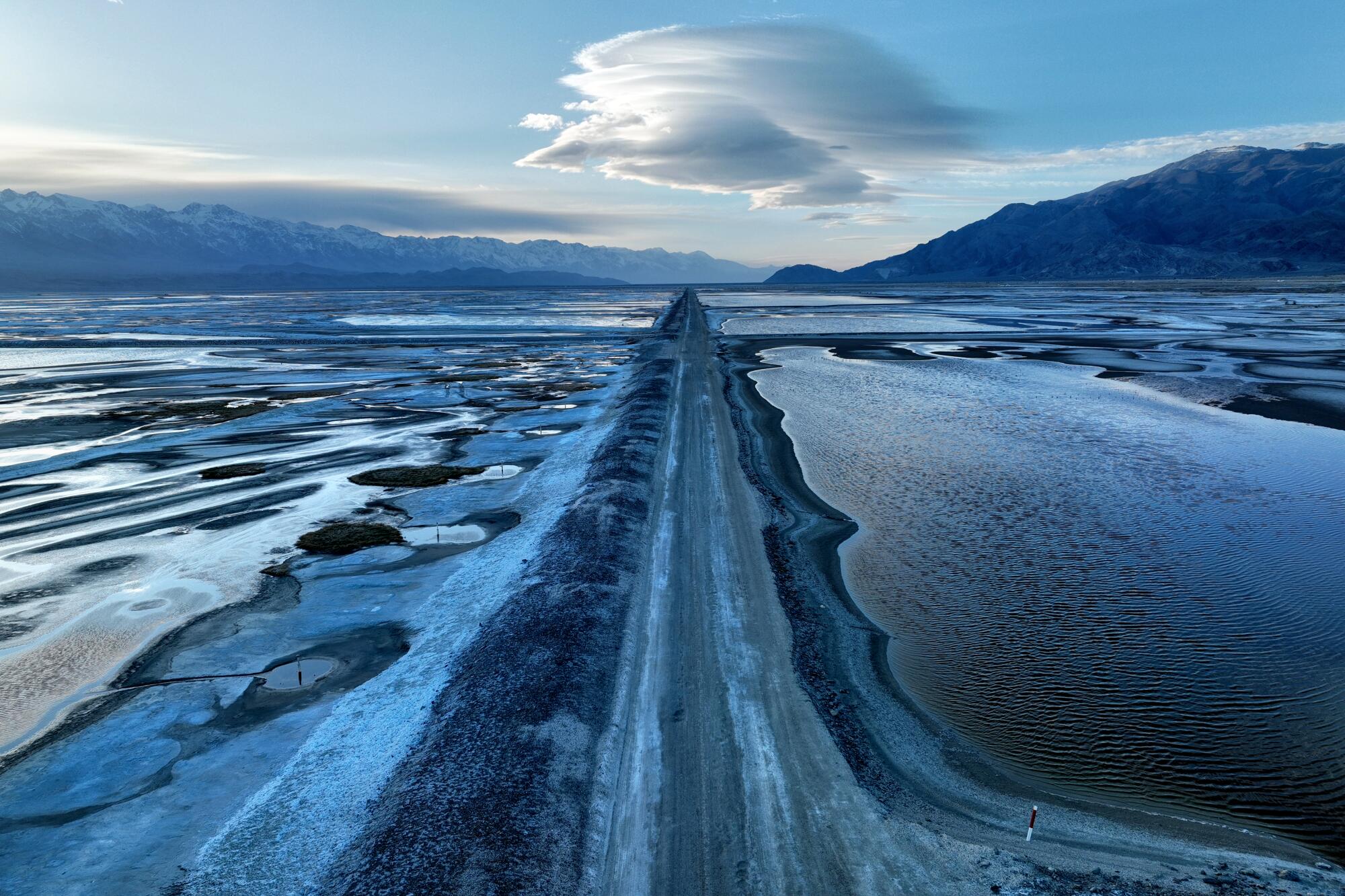
- Share via
OLANCHA, Calif. — More than a month after heavy storms eroded a section of the Los Angeles Aqueduct, work crews are still scrambling to complete repairs and shore up flood defenses in the face of a weeklong heat wave that threatens to trigger widespread snowmelt in the Sierra Nevada.
“We’re doing as much as we can, as quickly as possible,” said Paul Liu, of the Los Angeles Department of Water and Power. “Our crews are working 12-hour shifts.”
Historic snowpack levels in the Eastern Sierra are expected to melt into runoff that is 225% of normal, which translates to about 326 billion gallons of water that will need to be managed, DWP officials said.
And while a typical runoff season in the region can last from May to June, this year’s “could push through to August,” said Anselmo Collins, senior assistant general manager of the DWP’s water system.

The DWP has already begun emptying reservoirs to create more storage space for the roughly 130 billion gallons of water expected to make its way to Los Angeles this spring and summer via the aqueduct — potentially enough to meet 80% of L.A.’s annual demand.
The hope is that most of the snow on the mountains stays frozen long enough to give DWP, Inyo County, state, and federal disaster officials enough time to prepare for widespread flooding expected when summer temperatures soar.
Temperatures across California started to rise Wednesday, but forecasters said the heat wave should be short-lived, with a cold front on the horizon that could limit the worst of snowmelt flooding risks.
L.A.’s water lifeline to the Owens Valley has never before faced such a long-term flood threat. The vulnerability of the century-old system was brought into sharp focus on March 10, when storm flooding destroyed a 120-foot section of the aqueduct near Olancha.
It was the first time in history that the 200-mile aqueduct had been breached by extreme weather, threatening water deliveries to 4 million ratepayers in Los Angeles.
To drain, dry and repair the breach, DWP crews first opened aqueduct floodgates 25 miles to the north.
Those releases, however, transformed the alkaline lake bed into a churning floodplain of corrosive flows that battered diversion systems, chewed through 18 miles of roads and berms, and encroached on pumping stations and high-voltage electrical infrastructure that would take millions of dollars and several years to replace, officials said.
Now, with forecasters predicting the state’s first heat wave of the season, there’s little time to rest for the crews using earthmovers, excavators and cranes to reinforce damaged berms with rocks and boulders, and to surround vulnerable roads and critical infrastructure with K-rail barrier walls.
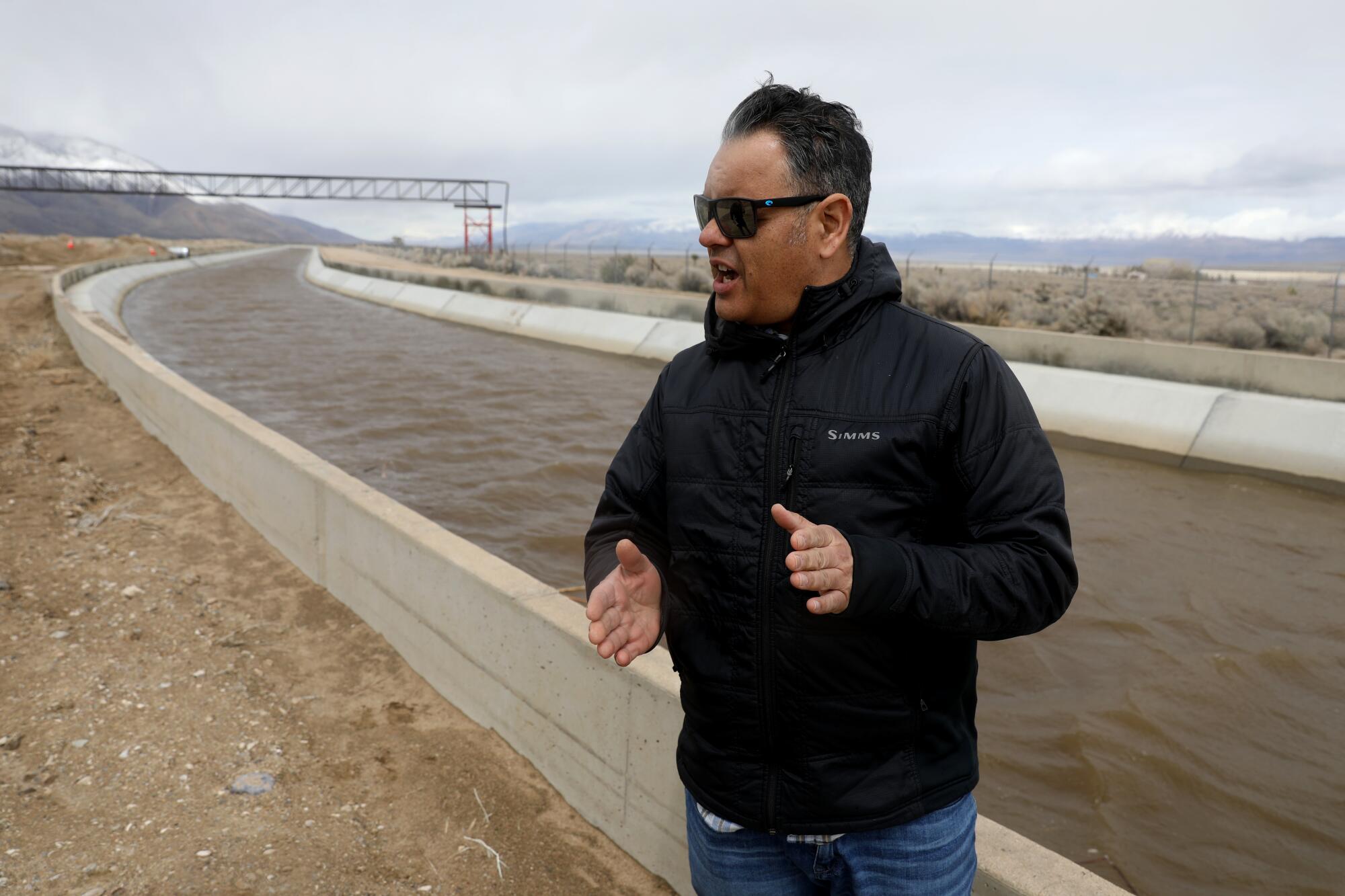
Adam Perez, manager of the aqueduct, said the DWP is “considering seeking reimbursements from the California Office of Emergency Services to help cover the millions of dollars it took to repair the breach in March.”
Among the infrastructure at stake is $2.5 billion worth of dust control systems the city of Los Angeles has been required to install to fight hazardous dust pollution — an environmental consequence of L.A.’s draining of Owens Lake more than a century ago.
The Los Angeles Department of Water and Power is struggling to maintain the city’s Eastern Sierra aqueduct amid continued flooding from snowmelt.
“Most of the repair work will be completed by June,” said Liu, who heads the DWP’s dust control program. “But with all that snow still up there in the mountains, our crews may be out here a lot longer than that.”
It’s not all bad news. The clank and roar of heavy machinery hasn’t deterred tens of thousands of waterfowl, gulls and shorebirds from taking advantage of dozens of square miles of new, inadvertently created wetlands to rest and bulk up on brine flies before completing their migratory journeys to breeding grounds as far north as the Arctic.
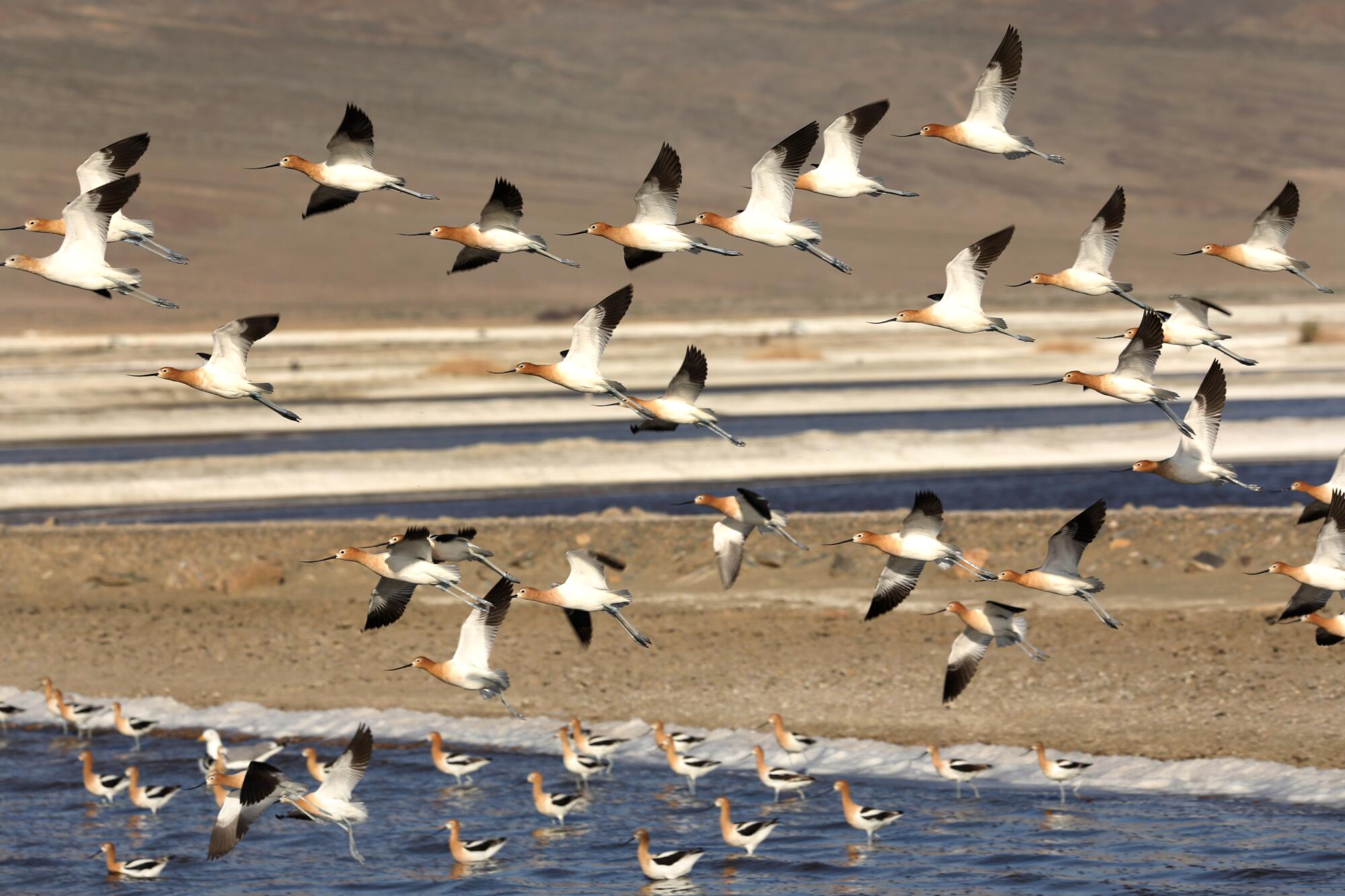
But elsewhere in Owens Valley, a gash of high desert between the Sierra Nevada and the White and Inyo mountains, DWP officials and property owners see signs of concern lurking in ponds, lakes, creeks, irrigation canals and fields that are already brimming with snowmelt.
Drought, wildfires, flooding and heavy snow are nothing new in the eastern Sierras. But this year the region is mirroring patterns of extreme weather worldwide.
The April 29 trout season opener at Crowley Lake is typically a spectacle with fishing enthusiasts in boats trolling in every direction.
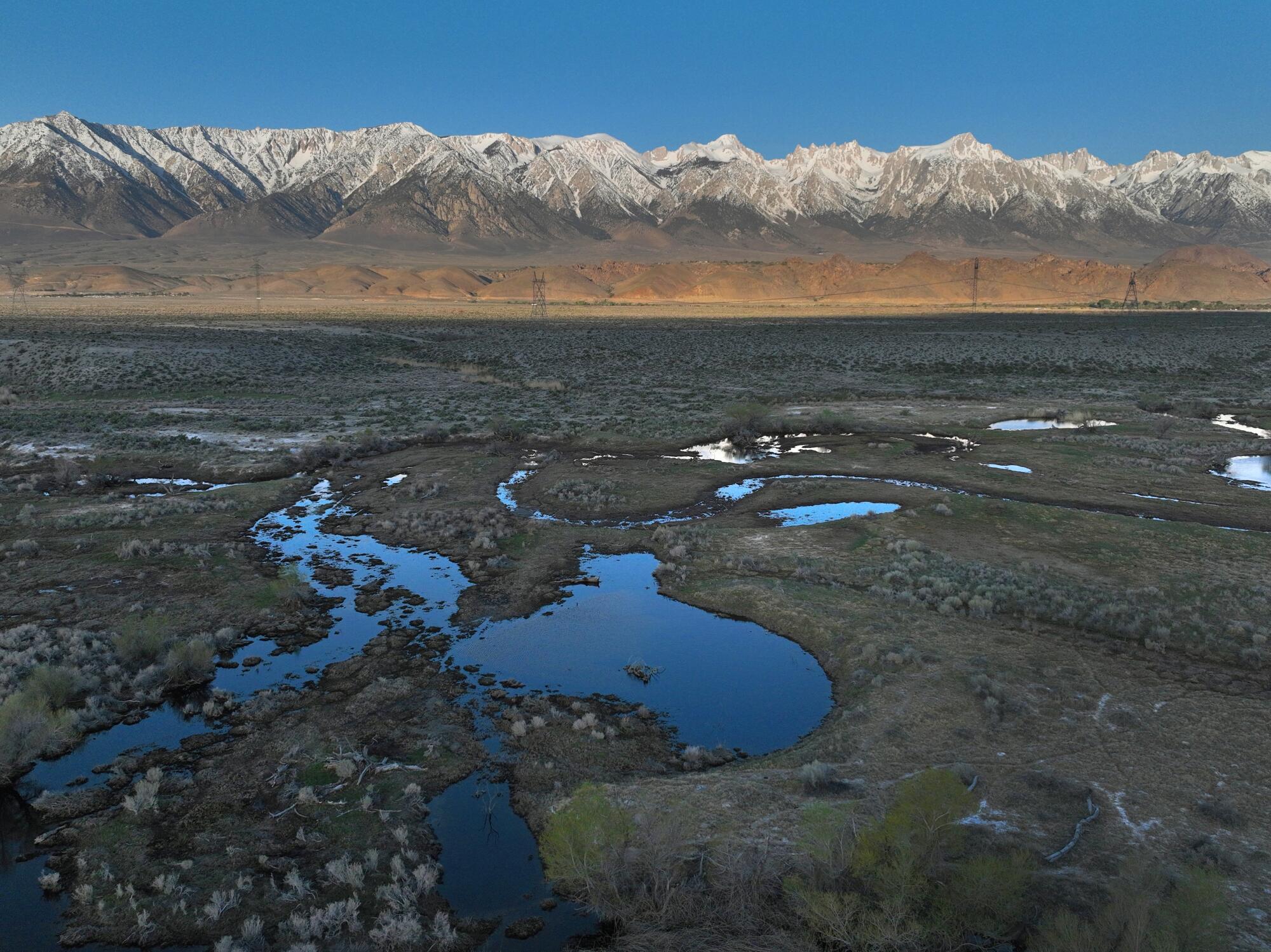
But as of April 21, the lake was still frozen and the only boating concession on the lake announced that it was “safe to expect delays of at least a week.”
“This is an unprecedented situation,” said Abby Thomason, owner and general manager of Crowley Lake Fish Camp. “We will take things day by day, if the lake thaws, we will open, but we can’t say when that will be.”
Inyo National Forest officials announced last week that “to protect public and safety, and natural resources,” it was closing several lower-elevation dirt roads “due to storm damage and prediction of spring snowmelt runoff impacting them further.”
“We know everyone is anxious to get outside and start enjoying springtime adventures on the Inyo,” said Scott Kusumoto, acting director of the Inyo National Forest, “and we’re doing everything we can to make repairs and reopen roads as conditions allow.”
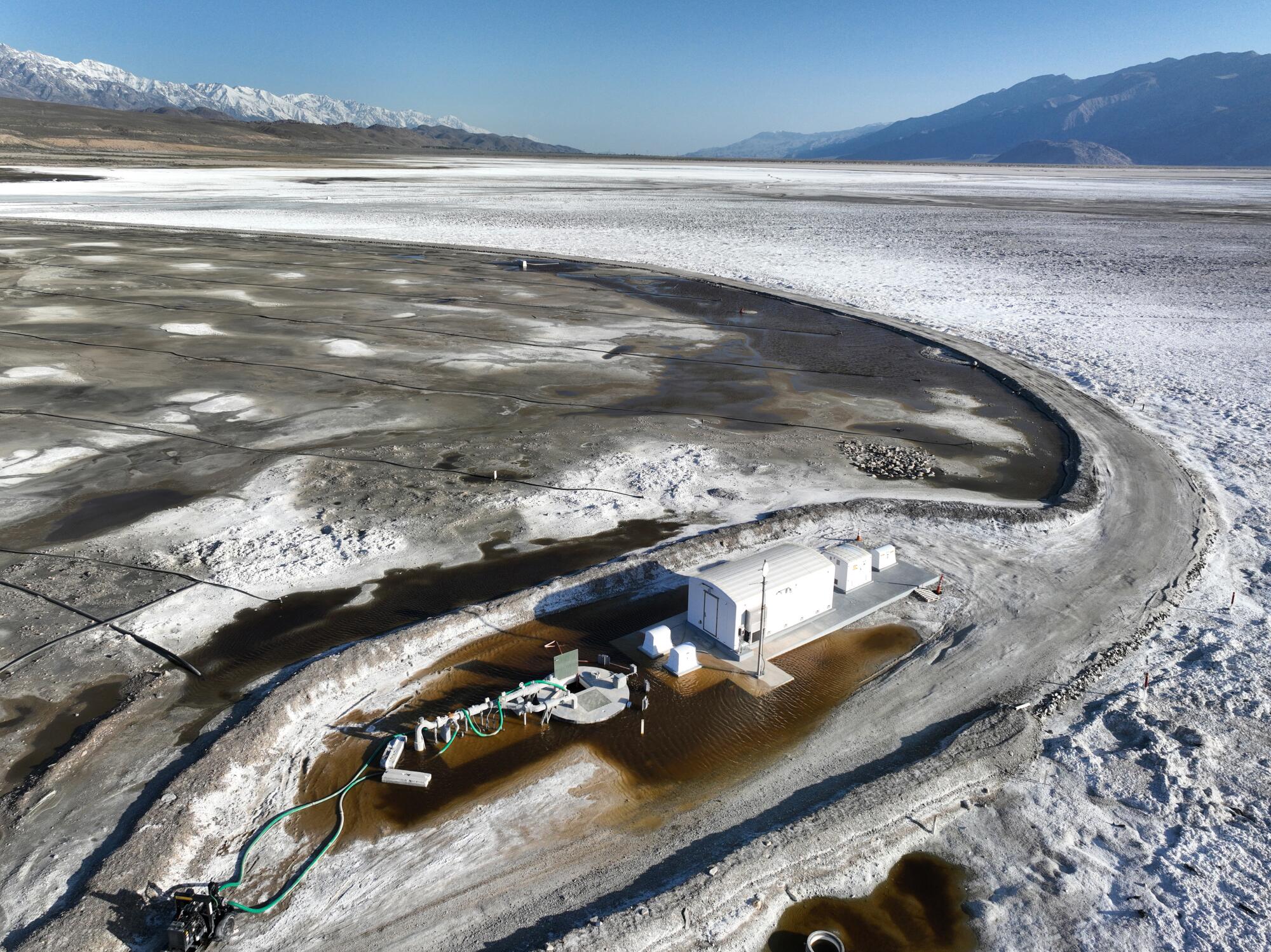
The challenge now is to prevent the bounty of Sierra snowmelt expected to course through the aqueduct this spring and summer from overflowing, inundating the lake bed, as well as fields, homes and businesses.
DWP activities have elicited concern in Owens Valley since the turn of the 20th century, when Los Angeles agents posed as ranchers and farmers to buy land and water rights in the area, then began building an aqueduct to collect and divert water that had sustained Owens Lake for 800,000 years.
California’s snowmelt is leading to flooding and erosions. The Central Valley and Yosemite are dangerously affected, but the water can benefit drought-battered farmers.
By 1926, the diversions that began in 1913 had dried up most of Owens Lake, triggering immense wind-blown sheets of powder-fine lung-damaging particles that descended on towns downwind.
Under a court order, the DWP has spent more than $2.5 billion over the last three decades transforming the lake’s grim heritage with dust control projects including shallow flooding that have reduced salty, alkaline toxic dust emissions by nearly 100%.
In what is now hailed as an astonishing accidental ecological success story, brine flies soon returned to the thin sheen of water tinged bright green, red and orange by algae and bacteria. Then came tens of thousands of waterfowl and shorebirds that feed on the brine flies.

In 2018, Owens Lake was designated a Western Hemisphere Shorebird Reserve Network site of international importance, joining an exclusive group of 104 areas between Alaska and the southern end of South America certified for their outstanding numbers of birds.
Last week, the repair work of utility crews on the lake bed coincided with the eighth annual Owens Lake Bird Festival, which drew more than 100 nature lovers from across the nation.
The event is co-hosted by many of the conservationists who played a large role in holding L.A. accountable for dust storms that descended on a region of dormant volcanoes, spiky lava fields, craggy mountains and cascading creeks.
On a recent morning, Owens Valley botanist Mike Prather, who helped organize the bird festival, scanned a flooded northern portion of the lake bed through binoculars, smiled and said, “Wow. It’s a good day for migrating birds.”
“It also looks like the DWP is doing a pretty good job of protecting its investments,” he added, “as well as the wildlife here.”

